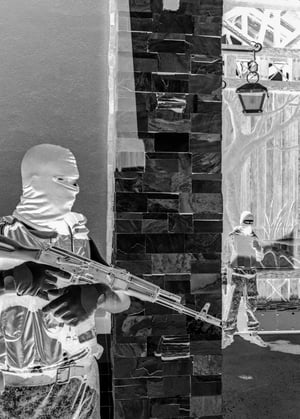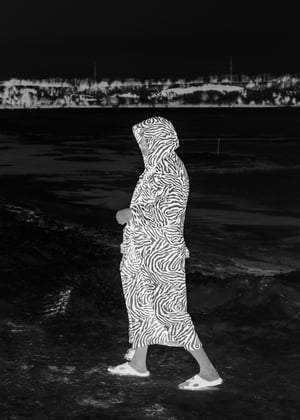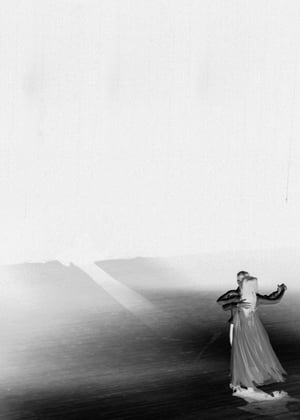TERRITORY - Rafael Yaghobzadeh
€35.00 / Coming Soon
TERRITORY - Rafael Yaghobzadeh
Depuis 2014, Rafael documente la situation en Ukraine et les multiples facettes de sa société : la révolution à Kiev, le référendum en Crimée, la guerre dans le Donbass...
Aujourd'hui, mélangeant plusieurs formes d'écritures et formats, il se consacre à la réalisation de projets documentaires en Europe de l'Est, dans les Balkans et au Moyen-Orient. En octobre 2020, il est blessé par un bombardement avec son collègue du journal Le Monde, lors du conflit au Haut-Karabakh.
Territory est le deuxième volet de son projet éditorial sur l'Ukraine.
A travers cet ouvrage Rafael assume de se distancier du documentaire pour plonger ailleurs. En choisissant le négatif, la faille qu’il ouvre est spatio-temporelle.
Les câbles électriques découpent des tessons de ciel carbone. Plantés dans la neige sombre ou la boue blanche : des poteaux nus, des masures détruites, des statues de Lénine...
Quant aux êtres humains, ils sont sans visage. Comme saisis en vision thermique, ils apparaissent en surbrillance, réduits à leur condition de cibles. Réfléchir en négatif, c’est considérer l’absence. La photographie en couleur est le domaine de l’humanité et de la souffrance ; le noir et blanc celui de l’Histoire et de la tragédie.
Livre dos collé/cousu
20,5 x 28,5cm - 64 pages
Impression trichromie argenté
Papier GardaMatt Ultra 150g
Couverture cartonnée Wibalin
400 exemplaires co-édité avec BATT Coop
_
Since 2014, Rafael has been documenting the situation in Ukraine and the multiple facets of his society : the revolution in Kiev, the referendum in Crimea, the war in Donbass ...
Today, mixing several forms of writing and formats, he is dedicates to the creation of documentary projects in Eastern Europe, in the Balkans and in the Middle East. In October 2020, he was injured by a bombing with his colleague from the newspaper Le Monde, during the conflict in Nagorno-Karabakh.
Territory is the second part of his editorial project on Ukraine.
Through this book Rafael assumes to distance himself from the documentary to dive elsewhere. By choosing the negative, the rift it opens is spatiotemporal.
Electric cables cut shards of carbon sky. Planted in dark snow or white mud : bare poles, destroyed huts, statues of Lenin...
As for human beings, they are faceless. As captured in thermal vision, they appear highlighted, reduced to their target condition. To think negatively is to consider absence. Color photography is the domain of humanity and of suffering ; black and white that of history and tragedy.
Sewn Binding
20,5 x 28,5cm - 64 pages
Trichromie silver print
Paper GardaMatt Ultra 150g
Hard cover Wibalin
Edition of 400 co-edited with BATT Coop
_
ISBN : 978-2-490656-07-3





